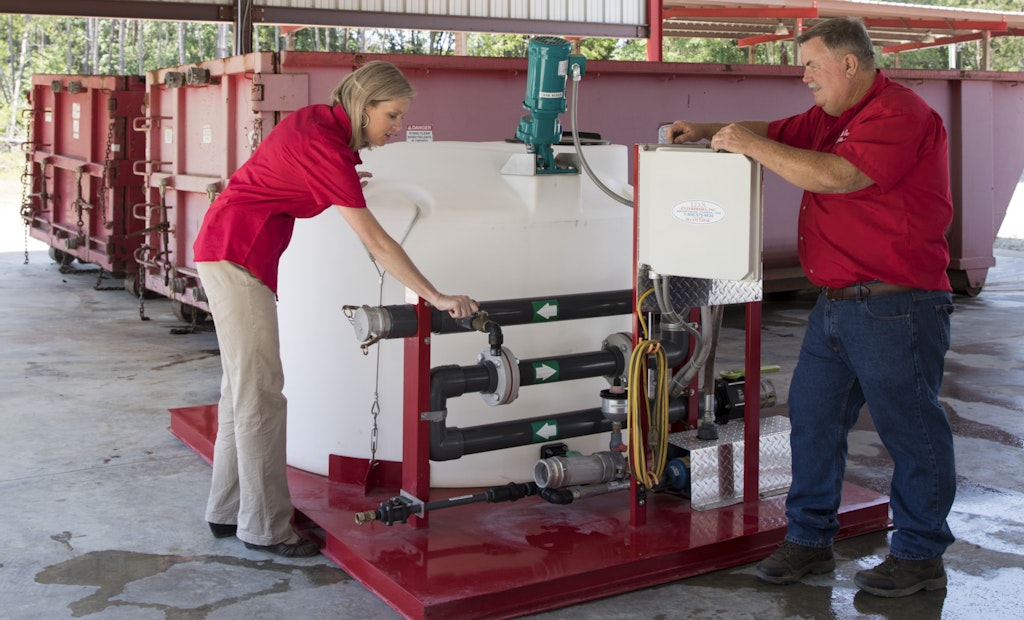
You can see two of NDB Septic's roll-off dewatering boxes in the background. They're made by Aqua-Zyme Disposal Systems, each capable of processing 450 gpm.
Interested in Disposal?
Get Disposal articles, news and videos right in your inbox! Sign up now.
Disposal + Get AlertsNeal Bennett is a pretty resourceful businessman, as reflected in his ability to build out his own vacuum trucks and successfully diversify his company, NDB Septic Service, by branching into markets in which he has no experience.
When a lack of disposal facilities threatened his attempt to break into another new market — pumping out grease traps in and around his home base of Nashville, Georgia — he did what any good entrepreneur would do: Figure out how to dispose of the grease himself.
The solution? Three 30-cubic-yard, roll-off dewatering boxes manufactured by AQUA-Zyme Disposal Systems, each capable of processing 450 gpm. The units cost about $40,000 each, a considerable investment. But they enable Bennett to stay in the high-margin market for grease trap service, he says.
“It was tough to get rid of grease, so I started looking for a solution,” Bennett says. “I saw the AQUA-Zyme equipment at the Pumper (now WWETT) show. The system works great.”
Bennett stores grease in a 50,000-gallon aboveground holding tank found at a rendering plant that had closed. “I had to hire a house-mover to get it here,” he says. “It cost me more to move it than the price of the tank.”
The grease in the holding tank is already mixed with lime while inside a truck’s vacuum tank; the lime reduces the odor and neutralizes the grease to the correct pH level in preparation for dewatering. From the holding tank, a Wacker Neuson trash pump propels the grease through a polymer mixing-and-dosing unit made by IDS Enterprises before going into the dewatering boxes. The polymer encapsulates the grease, making it suitable for landfill disposal.
Water drains out the bottom of the dewatering boxes and runs into a pit, where it’s eventually pumped into another tank and then into a vacuum truck and taken to a sewage treatment plant. The grease and other solids settle to the bottom of the tanks, where filters prevent them from draining while they dry, which typically takes about 12 hours.
“It looks like peat moss when it dries,” Bennett says. “At that point, we can take it to a landfill for disposal.” The three boxes can process about 30,000 gallons of grease in around four hours, he says.
To learn more about NDB Septic, read the contractor profile story in this month’s issue of Pumper.





